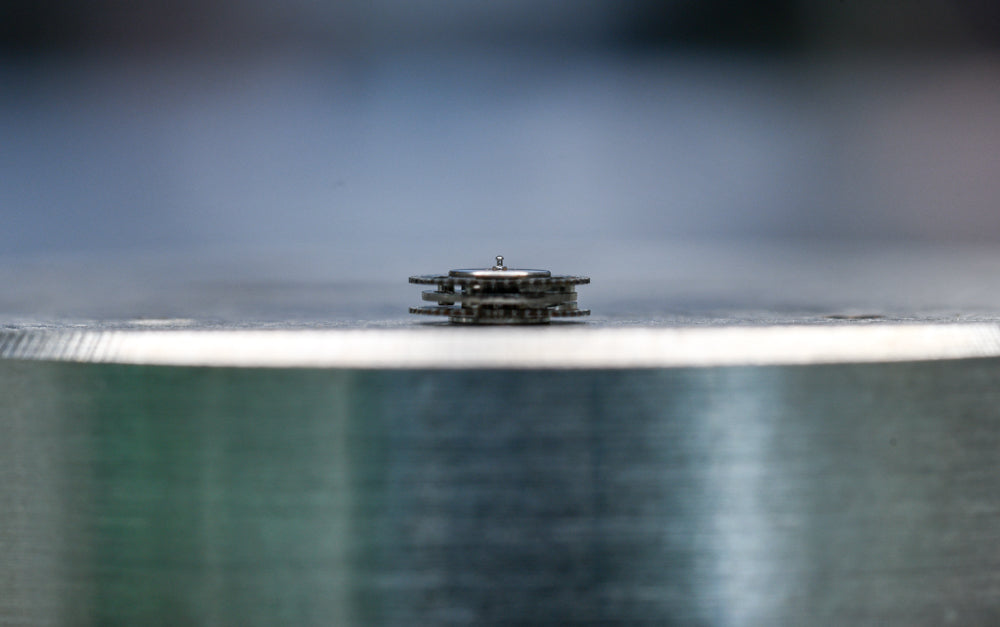From the Bench: Wear Marks

During a full service, every component in the watch is taken apart, inspected, cleaned and replaced or repaired if necessary, then reassembled and relubricated. The inspection portion of the service is critical, because you don’t want to rebuild a watch with bad parts, but you also don’t want to replace expensive components if it’s not necessary.
Determining wear is a nuanced process, but luckily there are some basic rules and guidelines that you can follow to make sure that you’re doing a consistent and good-quality inspection.

Some wear is immediately obvious. This barrel is missing teeth, which means it needs to be replaced.

Likewise, this pivot is deeply worn, to the extent that its upper pivot is badly misshapen, and visibly damaged. This wheel also needs to be replaced, and it’s also important to inspect its jewel carefully—as metal flakes off of a worn pivot and combines with oil in the jewel, it can actually form a grinding paste that can distort the holes in a synthetic ruby!

This component is more challenging to diagnose. You can see a slight black line on the upper pivot (the smallest cylinder on the right), right where the pivot met the jewel. This can be indicative of wear, but it can also simply be a stain on the metal from oxidized oil. Time to look closer.

The jewel in question is fairly dirty and gunky. There’s visibly-dry and degraded oil on the underside of the jewel, which could mean that the pivot was wearing out—or just that debris from elsewhere in the movement got into the oil. It’s hard to say; only the pivot itself can tell us whether or not it’s too worn for reuse.
Looking at the pivot can only tell you so much. Sure, it’s possible to use higher and higher magnification, but that’s impractical for a working watchmaker, who has dozens of components to scrutinize per service. If it’s still ambiguous through a 10x loupe, we use touch to determine the pivot’s condition.

The rule of thumb is this: if you can feel the wear mark with the tip of a black oiler, it’s worn and needs to be repaired or replaced. If you can’t feel the wear, it’s good to go!

Oilers come in a variety of colors that correspond to their size. Black is one of the smallest sizes, and the thickness of its spade tip is extremely thin—between 0.08 and 0.10 mm thick, roughly 1/10th the thickness of a human hair.

Running the tip of the spade up and down the pivot will quickly reveal whether the part is worn. At this scale, the unworn portions of a pivot will feel smooth, while a wear line will “catch” on the oiler with an obvious flick.
Luckily, this pivot was simply stained from the oil, and passed the oiler test smoothly. A thorough cleaning, and it’s ready to go back in the watch!
